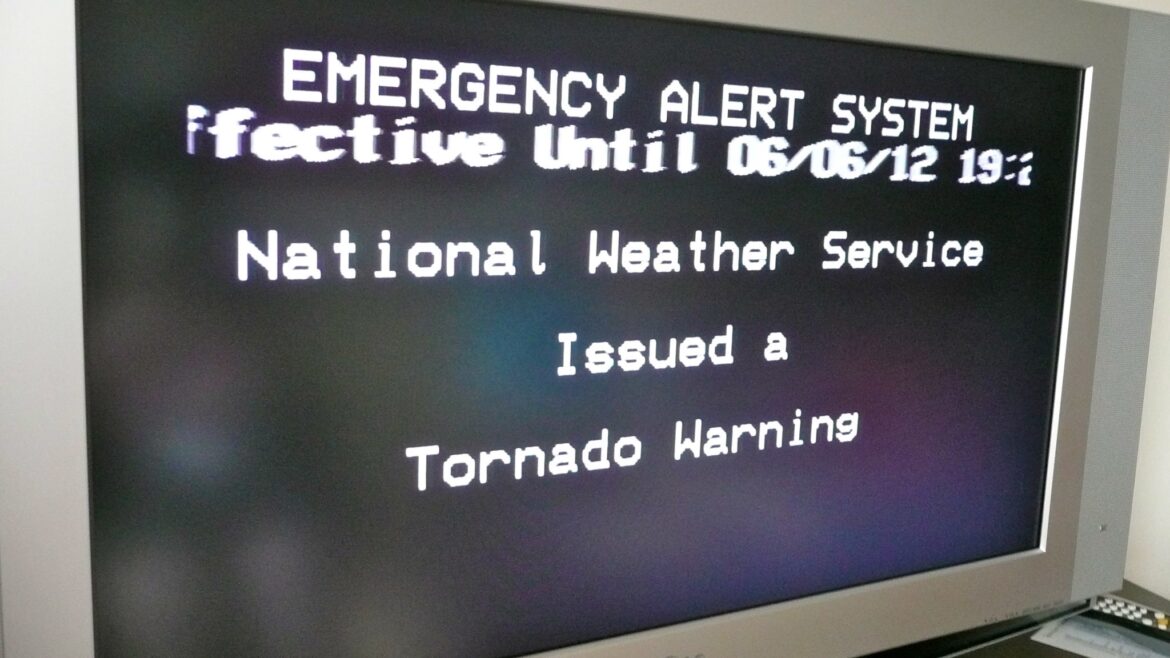How changes to the Emergency Alert System could affect community media

Scorpions and Centaurs / Flickr
This article was first published in the newsletter of the National Federation of Community Broadcasters and is republished here with permission.
As 2022 comes to a close, stations are busily strategizing for the new year. Part of that strategy must now include proposed rule changes successfully approved by the FCC pushing forward changes to the Emergency Alert System (EAS), as well as a significant Notice of Proposed Rulemaking (NPRM) the FCC issued in October of this year.
The FCC’s motivation to propose the changes seems to stem from failures across the public media system during the last national EAS test, as well as a small number of hacks that resulted in false alerts from radio and TV broadcasters over the last few years. The National Federation of Community Broadcasters has been following these proposals closely and evaluating how the changes could or would affect small community stations across the country.
You can read the FCC’s Report and Order, which includes the required changes and deadlines for each, here. Several excellent pieces have been written about the technical impact these changes and proposals will have for stations, including two articles from Radio World — an interview with Ed Czarnecki (VP of Global and Government Affairs at Digital Alert Systems Inc. and a board member of the EAS-CAP Industry Group) and a deep dive into the new rules here. Broadcast Law Blog also wrote about the changes, as well as the proposed cybersecurity rules, here.
The first phase of the approved EAS order focuses on changes in the language used for emergency alert messages, shifting from legacy language that can, at times, be highly technical. The goal is to make the language more easily understood by the general public. This phase also includes changes to language on visual displays, including those used by the deaf, hard of hearing and multilingual listeners. Thankfully, for a lot of stations, this change can be made through software updates. For others, new set-top boxes may need to be purchased. In the following phases, it’s fair to say stations will need to make EAS a part of their yearly budgets, depending on the station’s equipment needs.
Community radio stations are run by small teams made up of staff members and volunteers (some entirely volunteer-led), many located in remote, rural areas. Organizational capacity, smaller budgets and limited access to engineering and legal support are all challenges. In the case of the first phase to roll out, some stations will be able to update messaging systems through software upgrades, while others may need to purchase a new set-top box to the tune of hundreds of dollars. For a station with a smaller budget, that’s quite a challenge. Lack of proximity to an engineer compounds the cost of changes, as travel and lodging are often necessary.
Some larger stations have entire teams to maintain and upgrade equipment and systems, whereas community stations might have one person tasked to multiple departments on a limited operating budget.
It’s true that accessibility is inherently a part of community radio’s mission to serve the public, but one could argue that mandating these types of requirements and timelines for completion without consideration for station size or revenue could create an undue burden for small community radio stations.
Let’s move on to the NPRM issued for EAS cybersecurity. The NPRM includes proposed annual certification requirements, requirements to secure EAS equipment, new reporting requirements and ensuring operational readiness. Prompt equipment and system repair is also suggested. Stations could be required to create and maintain new risk-management plans specific to EAS to achieve certification.
This type of risk management requires strategy, organizational capacity and additional funding. Add to all of that stations that have not yet converted to modern digital infrastructure and systems, and the requirements begin to feel insurmountable. I recently spoke with Llu Mulvaney-Stanak, station manager of Central Vermont Community Media (WGDR), about their recent experience converting station equipment and systems in order to install a new and much-needed transmitter after their 50-year-old transmitter gave up the ghost. WGDR’s story is not unique — across the country, community radio stations, doing some of the most important work in the system, are struggling with crumbling infrastructure and aging equipment and technology that will inevitably need to be replaced.
Finding a way to mitigate the burden for community media while best serving the public and protecting the EAS is essential to a healthy public media system. Community media is an essential lifeline that must be uplifted by and supported by all.
Lisa Kettyle is program director of NFCB.





